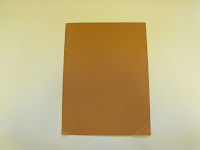THANKSGIVING PROJECT:
MAKING A CORNUCOPIA
This is our third and final project that will deal with the topic of Thanksgiving.
In this project you and your children will learn exactly what a cornucopia is and how to make one.
The Cornucopia is the most common synbol of a harvest festival. It is also known as "The Horn of Plenty."The cornucopia starts out as a "horn" shaped container and is fille with the abundance of the harvest.
In the days of farming and a time when holidays weren't so commercialized, families used dried fruits, veggies and the"Horn of Plenty" as decorations for Thanksgiving. The cornucopia also may have contained some leftover grains and seeds.
The cornucopia was usually hung over a doorway for good luck. This was a symbol that the harvest was in and " all is well."
Common fruitsand veggies seen in a cornucopia
a) Apples
b) Corn
c) Grapes
d) Bannanas
e) Oranges
f) Any fruit or veggie that your child likes
Project Options: This project can be finished by cutting out construction paper cutouts of fruits and vegetables or actually having the children cut out the fruits and vegetables that they like from magazines.
Step 1: Draw a "horn" on a brown peice of paper or recycle a paper bag.
Step 2: Cut out the "horn" and glue it onto a black piece of paper. Any color may be used but black is very
dramatic.
Step 3: Draw out a fruit or veggie onto a colored paper (or draw it on white paper and color it in).
Step 5: Repeat step 3 and 4 as many times as it takes to complete the project.
Step 6: When the project is completed step back and admire your group project.
Hang it up in your doorway for good luck and let everyone know that this years harvest was good.
HAPPY THANKSGIVING !!!!!























